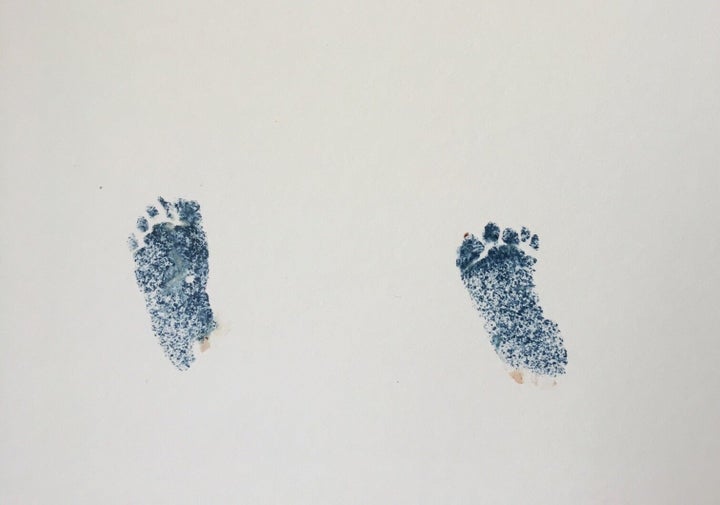
Ohio just became the 18th state to pass an arbitrary ban on abortions after 20 weeks.
The new law, which Gov. John Kasich (R) signed Tuesday, outlaws an extremely rare procedure. Only about 1 percent of all abortions take place after 20 weeks, and most are the result of doctors finding birth defects that were undetectable in earlier screenings.
The ban will push women to travel out of state if they discover a serious defect during a second trimester ultrasound, adding another layer of logistical and financial difficulty to an already complicated termination procedure, says Dr. Jennifer K. Hsia, a clinical fellow in family planning at the University of California, Davis. The 20-week abortion ban is also medically arbitrary, as fetuses this young rarely survive outside the womb. The new law, which does not make exceptions for rape, incest, or irreversible fetal anomalies, will especially burden poor women who must come up with funds for both the procedure and the trip.
While these restrictive laws affect a relatively small number of women in the U.S., those who have gone through the gut-wrenching decision to have a late-term abortion say legislators are taking advantage of the electorate’s ignorance about the procedure in order to weaken abortion rights overall.
And for at least one woman in Ohio, who terminated for medical reasons, the new law makes her doubt she’ll ever try to have another child again.
Sarah B., a children’s librarian in Cleveland, was ecstatic when she found out in 2014 that she was pregnant. She had just gotten married that year, and while she and her husband had always planned to have children, they didn’t expect to conceive in their first year of marriage.
Because she would be 35 by the time the baby was due, Sarah was anxious to see the results of the nuchal translucency scan, an ultrasound made at 12 weeks to assess a fetus’ risk of chromosomal abnormalities and heart problems. She also paid for a non-invasive prenatal blood test that screens for specific chromosomal abnormalities. When both of those tests came back with normal results, Sarah thought she was in the clear.
But an anomaly ultrasound, which can take place any time between 18 and 22 weeks, came with bad news: Sarah and her husband learned the baby they planned to name Craig would be born with hydrocephalus, an abnormal amount of fluid in the brain. It was so severe that his head was measuring three weeks ahead of schedule. The fetus also had agenesis of the corpus callosum, a condition in which the connecting link between the brain’s left and right hemispheres is either partially or fully absent. Finally, his limbs weren’t the proper size for his developmental age.
“I couldn’t bear the thought of having a child that would either die later in the pregnancy, die after birth or die in infancy.”
- Sarah B., who terminated her pregnancy at 20 weeks
Doctors suspected the fetus had a chromosomal condition, but couldn’t be sure. They also told Sarah that if she chose to continue the pregnancy, she would have to have a C-section operation at 28 weeks because beyond that, his head would be too big to pass through her birth canal or a surgical incision. She and her husband decided immediately to terminate the pregnancy.
“I knew that this wasn’t a pregnancy I wanted to carry to term,” she recalled. “I didn’t want to bring a child into the world that would have very poor health, and I couldn’t bear the thought of having a child that would either die later in the pregnancy, die after birth or die in infancy, which is frequently what happens in these types of pregnancies.”

From initial diagnosis to the termination, Sarah waited just three days as she met with specialists and planned for the procedure, which took place at 20 weeks and five days gestation. Technically, her timeline would not have run afoul of Ohio’s new law because it bans abortions on fetuses older than 20 weeks post-fertilization, or at 22 weeks gestation. (The normal method of measuring pregnancy length includes the two weeks before sperm meets egg).
But Sarah feels that the added time pressure of the new law would have only increased her and her husband’s grief, and it certainly doesn’t take into account the added diagnostic tests, second opinions and other procedures that other parents go through in order to confirm diagnoses and make a decision. Perhaps if people knew why most expecting parents opt to have late-term abortions, she said, there wouldn’t be such widespread support for restrictive laws.
“So many people don’t even know that the majority of abortions performed 20 weeks or later are because there’s either a serious condition with the fetus that wasn’t diagnosed until that time, or the mothers have found out that [their lives are] in danger,” said Sarah. “People are just ignorant of that fact, and they’re taking advantage of that ignorance.”
OB/GYNS are worried about their patients
Second trimester anomaly scans can take place any time between 18 to 22 weeks gestation, but Ohio patients will probably have to start setting up these appointments on the earlier side to give themselves time in the event of a serious fetal diagnosis, said Dr. Kristyn Brandi of Boston Medical Center and Boston University School of Medicine.
For women who get ambiguous results on these scans, there may be little time for the additional blood and scan testing typically used to confirm findings. These additional procedures could extend the decision to terminate by days or even weeks, depending on how long test results take to come back.
Finding and confirming evidence that a fetus is unviable before Ohio’s new 22 week gestation cut-off assumes that a woman can get an appointment for a scan right at the beginning of 18 weeks, that the ultrasound tech will be able to see all that they need to (sometimes a fetus’ position prevents a thorough examination), that the doctor supports a woman’s right to choose and won’t impede the process, and finally, that the woman herself will be able to make the termination decision quickly.
Deciding on a late-term abortion requires as much time as possible
Depending on the diagnosis they get, some women like Sarah immediately know they want to end a pregnancy. But others, like nonprofit worker Alexandra W., a 29-year-old in San Francisco, want as much time as possible before having to make a final decision.
Alexandra and her husband conceived quickly, and the pregnancy, their first, was smooth and easy until a 19-week anomaly scan. That’s when they received the news she was carrying a fetus with Potter’s Sequence, a rare and usually fatal condition in which fetuses develop without functioning kidneys or a bladder.
Because fetuses with Potter’s Sequence can’t urinate in the womb, the gestational sac doesn’t have enough amniotic fluid for the fetus to practice breathing. After birth, the baby dies because it can’t take a first breath on its own.
Buoyed by a rare case in which a baby with Potter’s Sequence had gone on to breathe after birth (and required a lifetime of dialysis until a future kidney transplant), Alexandra and her husband remained hopeful that their baby would make it, too. She went on bedrest for a week and drank as much water as she could to see if her gestational sac would fill with fluid.
But when she returned for a follow-up ultrasound, her amniotic fluid levels were even lower. That’s when the couple decided to end the pregnancy. Her third and final ultrasound, a formality before the procedure, showed that amniotic fluid levels had gotten so low that the fetus was being crushed in the womb, and his heartbeat was slowing down. At almost 21 weeks pregnant, Alexandra had the dilation and evacuation procedure to end the pregnancy.
“We absolutely wanted to make sure that it was necessary, because it was heartbreaking.”
- Alexander W., who terminated her pregnancy at 21 weeks
Alexandra, who is Catholic, knew that others like her with strong religious convictions might choose to continue the pregnancy for as long as the fetus survived. But as a parent, she couldn’t make the same choice.
“Seeing what was already happening to him, it didn’t seem like something we wanted to do,” she said. “We were trying to be compassionate and preserve human dignity.”
California does not have term limits on abortion. But Alexandra said that if she lived in a state that had them, it would have made her choice all the more agonizing, because she wouldn’t have known for sure if her baby’s condition could have changed.
She and her husband waited as long as they could, Alexandra explained, because “we absolutely wanted to make sure that it was necessary, because it was heartbreaking.”
The couple named the baby Theodore, and packed up all the gifts they received at a baby shower. They hope that one day a sibling will be able to use them.

The new law may lead high-risk women to decide against pregnancy altogether
Doctors found after her termination that Sarah B.’s baby had an extremely rare chromosomal condition, a mosaic partial trisomy of chromosome 1, which means there were three copies of the chromosome in some of the fetus’ cells.
The only way Sarah’s doctor could have caught the condition before the second trimester anomaly scan would be through a diagnostic test like amniocentesis or the chorionic villus sampling in the first trimester. Both tests carry a small risk of miscarriage.
Sarah gave birth to a son in 2016. Because of her experience with her first pregnancy, she chose to have diagnostic testing as early as possible ― at 10 weeks, despite the slight risk of miscarriage ― and was on edge throughout the entire pregnancy. She’s unsure if she’ll try for another child in the future, but Ohio’s new abortion ban makes her think she’s better off with just one child.
“I was scared when I was pregnant again after my loss. I was scared of going through it again,” Sarah said. “I’m even more scared now that these restrictive laws are in effect. It’s kind of weighing on me to go toward ‘No,’ that we might say we’ll be happy with our one child.”
Clarification: Language has been amended to indicate that, although it is statistically uncommon and can involve a host of medical complications, infants born at 22 weeks gestation can survive outside the womb.
